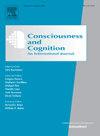Individual differences in false memories in the Deese–Roediger–McDermott Paradigm: An attention control account
IF 2
3区 心理学
Q2 PSYCHOLOGY, EXPERIMENTAL
引用次数: 0
Abstract
This study examined the underlying mechanisms of false memories observed in the Deese–Roediger–McDermott (DRM) paradigm. Previous work indicates that greater working memory capacity (WMC) and inhibition are associated with lower susceptibility to such false memories. We hypothesized that this may be, due to the closely related construct of attention control. We examined if individual differences in attention control accounted for variance in susceptibility to false memories, above and beyond inhibition and WMC alone. Using a standard DRM procedure in an individual differences approach to examine how WMC, inhibition, and attention control contribute to false word recognition on the DRM task. Our results indicate that attention control accounts for unique variance in susceptibility to the false memories above and beyond that of WMC and inhibition, suggesting that attention control may be more directly related to the true underlying mechanisms behind false memories.
Deese-Roediger-McDermott范式中错误记忆的个体差异:一个注意控制的解释。
本研究考察了在Deese-Roediger-McDermott (DRM)范式中观察到的错误记忆的潜在机制。先前的研究表明,更大的工作记忆容量(WMC)和抑制与更低的错误记忆易感性相关。我们假设这可能是由于与注意力控制密切相关的结构。我们研究了注意力控制的个体差异是否能解释对错误记忆的易感性的差异,而不仅仅是抑制和WMC。在个体差异方法中使用标准DRM程序来研究WMC、抑制和注意控制如何促进DRM任务中的假词识别。我们的研究结果表明,除了WMC和抑制之外,注意控制对错误记忆的易感性具有独特的差异,这表明注意控制可能与错误记忆背后的真正潜在机制更直接相关。
本文章由计算机程序翻译,如有差异,请以英文原文为准。
求助全文
约1分钟内获得全文
求助全文
来源期刊

Consciousness and Cognition
PSYCHOLOGY, EXPERIMENTAL-
CiteScore
4.30
自引率
8.30%
发文量
123
期刊介绍:
Consciousness and Cognition: An International Journal provides a forum for a natural-science approach to the issues of consciousness, voluntary control, and self. The journal features empirical research (in the form of regular articles and short reports) and theoretical articles. Integrative theoretical and critical literature reviews, and tutorial reviews are also published. The journal aims to be both scientifically rigorous and open to novel contributions.
 求助内容:
求助内容: 应助结果提醒方式:
应助结果提醒方式:


